Success stories: Tales of improving our native biodiversity
Barry Rice/GIST
January 2001
Photographs
Click
on the images below to view photographs related
to this success story.
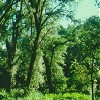
|

|

|
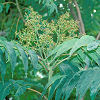
|
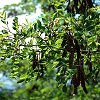
|
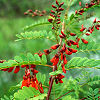
|
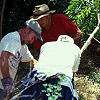
|
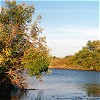
|
The Setting
The Cosumnes River is the only large waterway draining into California's
Central Valley that is not dammed. Its watershed spans 1,300 square miles
(3,300 square km), and reaches from an elevation of 7,500 ft (2,300m) in
the Sierra Nevada Mountains down to sea level. Restricted by only a small
system of levees, the Cosumnes floods seasonally which is essential for
maintenance of the riparian forest along the river.
This woodland is unique in California; a winter-decidious forest consisting of valley oak, Oregon ash, box elder, willows, and Fremont cottonwood. Tangled skeins of wild grape and poison oak clamber into the tree canopy. These woods and the surrounding wetlands are important stop-over points for numerous warbler and waterfowl species that migrate along the Pacific flyway.
The Cosumnes River Preserve was created to protect this remnant forest, especially since examples of this community in other parts of California have been degraded or completely lost.
The Invader - woody non-native trees
The hydrologic processes necessary to maintain the forest are intact, but it
remains threatened by a suite of woody invasive species that have begun to
invade the forest: edible fig, black locust, honey locust, tree-of-heaven,
and osage orange (Ficus carica, Robinia pseudoacacia,
Gleditsia triacanthos, Ailanthus altissima,
Maclura pomifera, respectively). The recent discovery of young honey
locust plants on the preserve was especially troublesome because this was
the first time the species had been found invading natural vegetation in
California. Other new shrubs and trees such as scarlet wisteria and
Chinese tallow tree (Sesbania punicea and Sapium sebiferum),
known to be pernicious invaders in other states and countries, have been
recently discovered invading a nearby watershed, and might soon establish
colonies along the Cosumnes River.
If left unchecked, these invaders could dramatically transform the forest community from a native floodplain forest into a woodland dominated by non-native trees which would provide little food for native insects or for many native birds and mammals.
A Success Story
As soon as she recognized the severity of threat posed by the invaders,
Becky Waegell, The Nature Conservancy's Farmlands Coordinator at the
Cosumnes River Preserve,
developed a weed management plan with assistance
from the Conservancy's Wildland Invasive Species Team. The weed
management plan was critical for prioritizing control activities and
securing support from volunteers and partners (seven partner agencies and
organizations collaborate with The Nature Conservancy at the preserve).
Significant funding to implement her weed management plan
was provided by
the National Fish and Wildlife
Foundation.
Becky quickly realized that she would not be able to stem the invasion without even more support, so she enlisted the help of the "Hard Corps" unit of the preserve's volunteer Habitat Restoration Team. The Hard Corps team has been working at the preserve for over a decade, knows the preserve well, and can be fully trusted with chainsaws and other control tools. Becky even organized classes for them on safe and appropriate methods of herbicide use.
After hundreds of hours of monitoring and difficult control work, Becky and the Hard Corps team have eliminated all known invading fig trees and sharply reduced the abundance of other invasive trees on the site. But the Cosumnes staff is not yet finished protecting the preserve's rare forest from woody invaders. Becky and her volunteer corps are aware of potential new invaders that are already becoming troublesome in adjacent watersheds. They know what these new invaders look like, are working to prevent their establishment, and are ready to quickly contain these new invasions should they occur. They know that acting to find and control invasive species when infestations are still small is critical. This is especially true for woody invasives, which can transform an entire ecosystem if left unchecked. Once the infestation begins spreading rapidly and becomes large, it may be impossible to contain.
More Information
For more information, contact Becky Waegell, Farmlands Coordinator,
Cosumnes River Preserve: 916-683-1741, bwaegell(at)cosumnes.org.
Review articles with more detailed information about some of these species can be obtained from the TNC Wildland Invasive Species Team web site.
This document in other formats: MS Word, Adobe Acrobat
This article may be treated as a press release and may be quoted by the media in part or in full. Publication quality versions of images on this page can be obtained from the Wildland Invasive Species Team by sending email to bamrice(at)ucdavis.edu.


